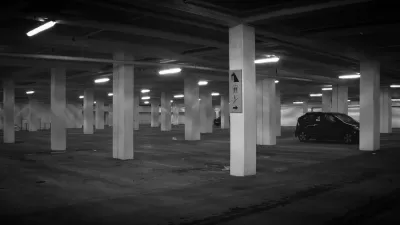In a set of recommendations submitted to the city, the commission calls for revised land use and transportation policies that reclaim public space from cars and shift focus away from vehicle throughput to more pedestrian-oriented uses.

A document submitted to the city of Seattle by its Planning Commission outlines an ambitious set of recommendations aimed at reclaiming public right-of-way for people, mitigating the impact of climate change, and improving safety on the city’s streets. The brief notes that road deaths and injuries are on the rise in spite of the city’s Vision Zero pledge.
“The brief goes on to note that the city will not be able to accommodate the growth anticipated in the coming decades if streets continue to be used in the same way they are now, stating that the status quo will ‘literally kill us,’” Ryan Packer writes in The Urbanist. The Commission calls on the city to include their recommendations in the update of the Seattle Comprehensive Plan, which will undergo a major update in 2024.
“Among the Planning Commission’s recommendations is the removal of vehicle storage from the current Comprehensive Plans’s list of needs that should be accommodated on city streets,” calling instead for “a citywide parking policy and plan that looks to balance revenue needs with opportunities for multi-function streets that provide more options, public space, and environmental benefits.”
The commission also highlighted the discrepancy between the proposed comprehensive plan update and the Seattle Department of Transportation’s Transportation Plan, which, according to a letter sent to SDOT earlier this year, “appear[s] to assume a future high rate of trip-making by privately owned vehicles, with the only variable being whether those vehicles are electric.” The focus on electrification, the commission pointed out, “will miss an opportunity to evaluate alternatives that the City has far more influence over, and that align with the forthcoming update to the Comprehensive Plan.”
As Packer notes, it remains to be seen whether the mayor and city council will adopt the Planning Commission’s bold, transformative vision for more sustainable and equitable land use and transportation planning.
FULL STORY: Planning Commission Pushes for Bolder One Seattle Plan Re-envisioning City Streets

Alabama: Trump Terminates Settlements for Black Communities Harmed By Raw Sewage
Trump deemed the landmark civil rights agreement “illegal DEI and environmental justice policy.”

Planetizen Federal Action Tracker
A weekly monitor of how Trump’s orders and actions are impacting planners and planning in America.

The 120 Year Old Tiny Home Villages That Sheltered San Francisco’s Earthquake Refugees
More than a century ago, San Francisco mobilized to house thousands of residents displaced by the 1906 earthquake. Could their strategy offer a model for the present?

In Both Crashes and Crime, Public Transportation is Far Safer than Driving
Contrary to popular assumptions, public transportation has far lower crash and crime rates than automobile travel. For safer communities, improve and encourage transit travel.

Report: Zoning Reforms Should Complement Nashville’s Ambitious Transit Plan
Without reform, restrictive zoning codes will limit the impact of the city’s planned transit expansion and could exclude some of the residents who depend on transit the most.

Judge Orders Release of Frozen IRA, IIJA Funding
The decision is a victory for environmental groups who charged that freezing funds for critical infrastructure and disaster response programs caused “real and irreparable harm” to communities.
Urban Design for Planners 1: Software Tools
This six-course series explores essential urban design concepts using open source software and equips planners with the tools they need to participate fully in the urban design process.
Planning for Universal Design
Learn the tools for implementing Universal Design in planning regulations.
Clanton & Associates, Inc.
Jessamine County Fiscal Court
Institute for Housing and Urban Development Studies (IHS)
City of Grandview
Harvard GSD Executive Education
Toledo-Lucas County Plan Commissions
Salt Lake City
NYU Wagner Graduate School of Public Service





























